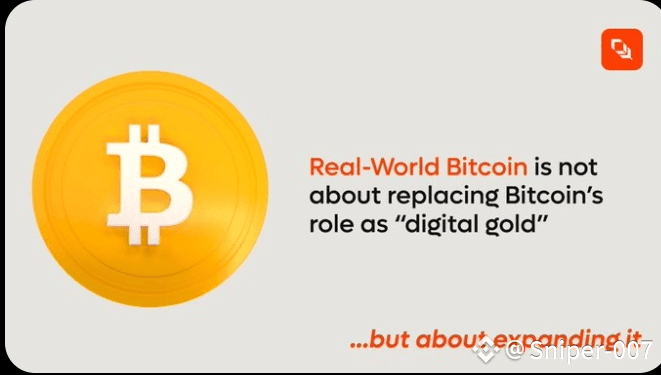
In the fast-changing world of finance and technology, few projects are rewriting the rules as quietly yet powerfully as Plume Network. Built as a modular Layer 2 blockchain, Plume isn’t chasing hype—it’s solving one of the most complex puzzles in digital finance: how to bring real-world assets into the blockchain economy safely, efficiently, and compliantly.
While many blockchains boast speed or decentralization, Plume focuses on something far more fundamental—trust. It’s building an ecosystem where regulation and innovation don’t compete; they work together to shape the future of Real-World Asset Finance (RWAfi).
A New Kind of Blockchain for a New Kind of Finance
Plume Network isn’t just another Ethereum scaling solution—it’s a purpose-built infrastructure designed specifically for the tokenization and management of real assets like real estate, private credit, and renewable energy.
Traditional finance runs on trust, compliance, and legal structure. Crypto runs on code, transparency, and automation. Plume merges both worlds, enabling institutions to issue, trade, and manage regulated assets directly on-chain while still retaining the performance and flexibility of DeFi.
Its architecture is built on Arbitrum Orbit, ensuring full EVM compatibility, lightning-fast transactions, and extremely low fees. For data availability, it integrates Celestia, a decentralized layer that guarantees integrity and accessibility without clogging Ethereum’s base layer.
The result? A blockchain that’s as fast as modern DeFi yet as compliant as traditional finance.
Compliance as a Core, Not an Add-On
Plume’s most distinctive trait is its compliance-first philosophy. Instead of treating regulation as a checkbox, Plume has woven it into the very fabric of the chain.
Every transaction passing through the network undergoes automated AML and sanctions screening at the sequencer level—before it’s ever finalized on-chain. Tools from leading analytics firms like TRM Labs, Chainalysis, Elliptic, and Forta help maintain real-time oversight and risk analysis.
For institutions that have long avoided blockchain due to compliance uncertainty, Plume offers a rare sense of assurance: security without compromise, transparency without chaos.
A Stable and Scalable On-Chain Economy
At the heart of Plume’s design is its multi-token model:
$PLUME – The native token for gas fees, governance, and staking.
pUSD – A stablecoin backed one-to-one by USDC, used for settlements and DeFi operations.
pETH – A wrapped Ethereum token that enables liquidity and yield farming within Plume’s DeFi layer.
This structure allows for predictable costs, institutional-grade stability, and seamless movement of value across different applications—all while keeping users shielded from volatility.
Real-World Adoption in Motion
Plume isn’t a theoretical concept—it’s already proving itself in real markets. Upon mainnet launch, the network had onboarded over $150 million worth of tokenized assets, including private credit pools, carbon credits, and green energy projects.
Through its RWA Portal, users can explore live investment opportunities, stake their holdings, and earn ecosystem rewards—all in a single, secure interface.
By simplifying how institutions tokenize and manage assets, Plume has turned blockchain from a niche experiment into a practical tool for real finance.
Cross-Chain Liquidity Through SkyLink
One of Plume’s most innovative developments is SkyLink, a protocol that allows yields from tokenized assets to flow across multiple blockchains.
Imagine holding a tokenized real estate asset on Plume and still earning DeFi yield on Ethereum or Arbitrum—without bridging or transferring anything. That’s the promise of SkyLink. It makes capital more efficient, liquidity more global, and compliance simpler than ever before.
This cross-chain layer gives Plume a unique edge, blending regulatory-grade finance with the borderless nature of Web3.
A Landmark Step in Regulation
In October 2025, Plume achieved a milestone that few in the blockchain space have even attempted—it became officially registered with the U.S. Securities and Exchange Commission (SEC) as a transfer agent for tokenized securities.
This recognition gave Plume the authority to maintain investor records and corporate actions within U.S. regulatory frameworks—a move that firmly positioned it as a legitimate bridge between blockchain and traditional capital markets.
This wasn’t just a win for Plume—it was a win for the entire Web3 industry, proving that blockchain and regulation can coexist in harmony.
An Expanding Universe of Builders
Since launch, Plume’s ecosystem has exploded to over 180 projects across DeFi, asset tokenization, and financial infrastructure. It’s now home to startups, institutional partners, and established issuers all experimenting with new models of digital asset finance.
To accelerate growth, Plume established a $25 million RWAfi Ecosystem Fund, supporting builders and innovators who want to bring regulated real-world finance into Web3.
Its developer tools, API integrations, and transparent documentation make it a magnet for creators who believe in building for both the markets of today and the finance of tomorrow.
Challenges and the Road Ahead
Plume’s journey is still unfolding. Decentralizing its sequencer and fraud-proof mechanisms remains a key priority, as does deepening liquidity for tokenized assets. The path to full-scale institutional adoption is complex—but Plume’s approach to regulation, transparency, and scalability puts it far ahead of most competitors.
Its greatest challenge may also be its greatest strength: maintaining the balance between open DeFi innovation and strict regulatory compliance. Few have managed it; Plume is trying to perfect it.
The Bigger Picture: From Blockchain to Real Finance
Plume Network isn’t trying to replace traditional finance—it’s trying to upgrade it. By creating a compliant, scalable, and interoperable environment for real-world assets, it’s setting the standard for what the next generation of financial systems could look like.
As more institutions and investors recognize the efficiency of tokenized finance, Plume could become the backbone of a global movement—one that turns trillions in off-chain assets into a new wave of on-chain liquidity.
In a space filled with speculation, Plume is building something tangible: the in frastructure for a regulated, efficient, and accessible financial future.


